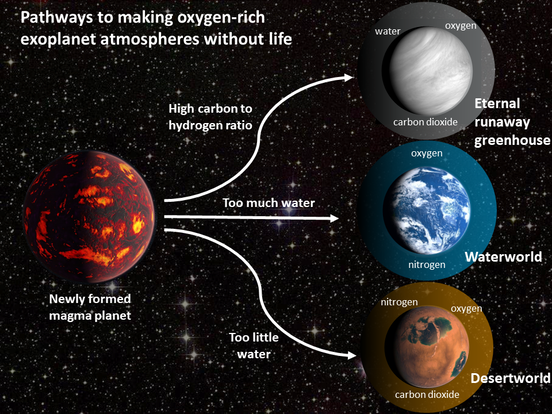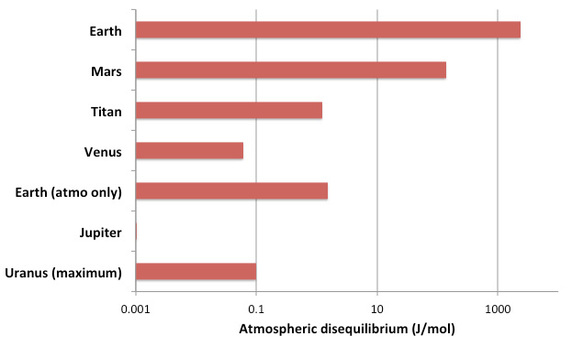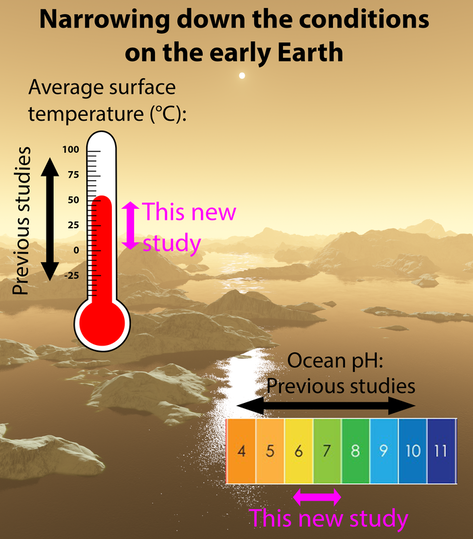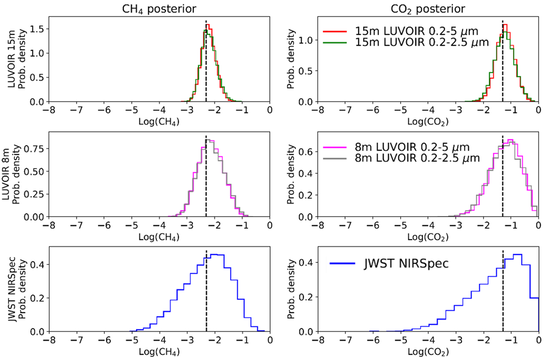
Whole-Planet Geochemical Evolution
Interpreting upcoming observations of terrestrial exoplanets will require a quantitative understanding of how such planets evolve. We develop models to understand the interactions between planetary atmospheres, interiors, and their astrophysical environments on long timescales. These models have been applied to predict non-biological oxygen accumulation, constrain Venus climate evolution, and anticipate atmospheric evolution on habitable zone exoplanets orbiting low mass stars.
Whole-Planet Geochemical Evolution
Interpreting upcoming observations of terrestrial exoplanets will require a quantitative understanding of how such planets evolve. We develop models to understand the interactions between planetary atmospheres, interiors, and their astrophysical environments on long timescales. These models have been applied to predict non-biological oxygen accumulation, constrain Venus climate evolution, and anticipate atmospheric evolution on habitable zone exoplanets orbiting low mass stars.

Disequilibrium Biosignatures in Planetary Atmospheres
Life has drastically modified the composition of Earth's atmosphere. Future telescopes will be capable of measuring the atmospheric composition of terrestrial exoplanets to look for signs of life. Previous work focused on developing quantitative metrics of atmospheric disequilibrium as a sign of life, and ongoing work focuses on disequilibrium biosignatures in anoxic atmospheres and its non-biological false positives.
Life has drastically modified the composition of Earth's atmosphere. Future telescopes will be capable of measuring the atmospheric composition of terrestrial exoplanets to look for signs of life. Previous work focused on developing quantitative metrics of atmospheric disequilibrium as a sign of life, and ongoing work focuses on disequilibrium biosignatures in anoxic atmospheres and its non-biological false positives.

Understanding Earth's Biogeochemical Evolution
The Earth's climate has been remarkably stable over the last 4 billion years despite increasing solar luminosity. Traditionally, this 'faint young sun' problem has been explained by the continental weathering thermostat, but seafloor weathering and reverse weathering may have also played important roles. We have developed a carbon cycle model to investigate these competing influences on planetary climate on geologic timescales and constrain Precambrian climate.
How and why Earth's atmosphere became oxygen rich is a topic of intense debate. While life is the ultimate source of virtually all atmospheric oxygen, evidence suggests oxygenic photosynthesis evolved hundreds millions of years before oxygen levels in the atmosphere increased. We have analyzed the carbon isotope record, which tracks organic carbon burial and therefore the oxygen source flux, to determine whether changes in oxygen sources alone can explain the rise of oxygen.
The Earth's climate has been remarkably stable over the last 4 billion years despite increasing solar luminosity. Traditionally, this 'faint young sun' problem has been explained by the continental weathering thermostat, but seafloor weathering and reverse weathering may have also played important roles. We have developed a carbon cycle model to investigate these competing influences on planetary climate on geologic timescales and constrain Precambrian climate.
How and why Earth's atmosphere became oxygen rich is a topic of intense debate. While life is the ultimate source of virtually all atmospheric oxygen, evidence suggests oxygenic photosynthesis evolved hundreds millions of years before oxygen levels in the atmosphere increased. We have analyzed the carbon isotope record, which tracks organic carbon burial and therefore the oxygen source flux, to determine whether changes in oxygen sources alone can explain the rise of oxygen.

The Detectability of Exoplanet Biosignatures
Will we find life on exoplanets the near future? We have simulated observations of Earth-like planets with the James Webb Space Telescope and other future space telescope concepts to see if disequilibrium biosignatures are potentially detectable, and to determine the most favorable observing strategies and targets.
